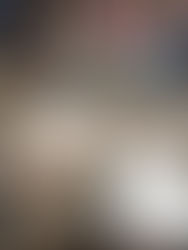Where Art Meets Technology
- cti607
- Apr 18, 2019
- 2 min read
What do technology and art have in common? They intersect in more and more diverse ways as they both allow for expression, variety, creativity, sharing of ideas, and more!

At Manzanita Elementary School, Devon Inglee, the art teacher is helping students see how these fields intersect. This year in 5th grade she partnered with the school's CTI, Noah Mickey-Colman, to engage in a project on Forced Perspective.

Forced perspective is a technique that employs optical illusion to make an object appear farther away, closer, larger or smaller than it actually is. It is used primarily in photography, filmmaking and architecture. It manipulates how we see through the use of scaled objects.
Students first studied the concept of forced perspective and engaged in a reflection about different famous examples of the art. They then worked in groups to plan the types of photographs they wanted to create. They were then instructed in the use of the Camera app on the iPad to take photos and be able to use its more complex features such as adjusting contrast, focus, zoom, and changing perspective using these features. Next, students used iPads and employed a variety of props, each other and- in one case- 1st graders, to create photos that tricked the eye into seeing a new form of perception. Students were then instructed on how to edit photos in the Photos app. Utilizing this instruction they used filters and other editing techniques in the Photos app to finalize their photographs and select their best work.
Once their photos were finalized students were taught how to use the Clips app. Their next task was to create a video reflection using the app Clips, in which they explained what forced perspective was, how they created their photos and why their photos created a new form of perspective. Their videos are thoughtful, reflective, funny and sweet- just like all of the students!

The standards that were taught in this unit were: Creating:VA.Cr1.1.5 Combine ideas to generate an innovative idea(s) for art-making. VA.Cr2.1.5 Experiment and develop skills in multiple art-making techniques and approaches through practice. VA.Cr3.1.5
Create artist statements using art vocabulary to describe personal choices in art-making.Presenting:VA.Pr2.1.5 Select and prepare artwork for display and justify personal choices and methods. Responding:VA.Re2.1.5 Interpret art by analyzing its characteristics (for example: form and structure, contextual information, subject matter, visual elements, use of media to identify ideas and mood conveyed). VA.Re3.1.5
Recognize differences in criteria used to evaluate works of art (for example: consider styles, genres, and media as well as historical and cultural contexts). Connecting:VA.Cn1.1.5 Apply learned vocabularies of art and design to create a work of art that reflects or is inspired by the natural and/or built environment in a new way. VA.Cn2.1.5 Describe how art is used to inform or change beliefs, values, or behaviors of an individual or society (for example: community murals can reflect concerns of the neighborhood, religious art can illustrate a group’s beliefs, an advertising image can be persuasive). DLP: Creativity and Innovation.
How do you or your students use art or technology or both to create, innovate, connect, respond, or present?








Comments